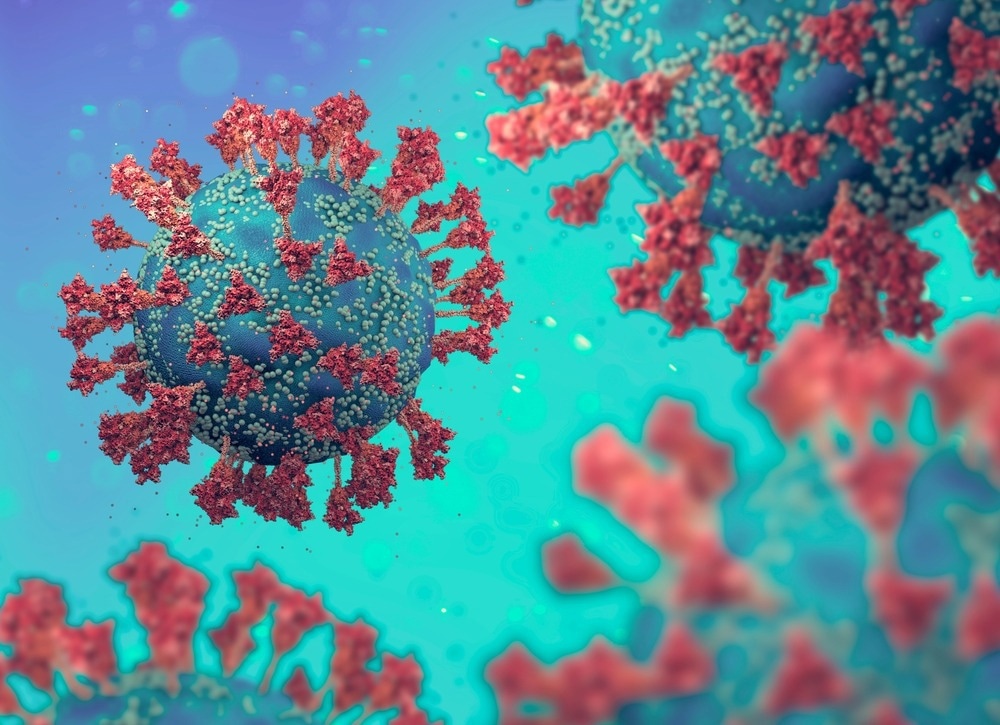In a recent study posted to the bioRxiv* preprint server, researchers reported mutations in severe acute respiratory syndrome coronavirus 2 (SARS-CoV-2) Delta and Omicron variants of concern (VOCs) infection cases treated with neutralizing monoclonal antibodies (nmAb) such as casirivimab+imdevimab (REGEN-COV) and sotrovimab (S309), respectively.
 Study: Genome-first detection of emerging resistance to novel therapeutic agents for SARS-CoV-2. Image Credit: Naeblys/Shutterstock
Study: Genome-first detection of emerging resistance to novel therapeutic agents for SARS-CoV-2. Image Credit: Naeblys/Shutterstock

 *Important notice: bioRxiv publishes preliminary scientific reports that are not peer-reviewed and, therefore, should not be regarded as conclusive, guide clinical practice/health-related behavior, or treated as established information.
*Important notice: bioRxiv publishes preliminary scientific reports that are not peer-reviewed and, therefore, should not be regarded as conclusive, guide clinical practice/health-related behavior, or treated as established information.
Background
SARS-CoV-2 has evolved with multiple mutations in its spike (S) receptor binding domain (RBD) that confer a fitness advantage to SARS-CoV-2 by enhancing transmissibility and/or enabling immune evasion. The S RBD binds with the angiotensin-converting enzyme 2 (ACE2) for entry into host cells, and thus, most nmAbs are targeted at the S RDB-ACE2 binding site. SARS-CoV-2 therapeutics have developed rapidly; however, the genetic barriers to drug resistance are not fully understood.
About the study
In the present study, researchers reported on SARS-CoV-2 mutations associated with nmAb resistance among REGEN-COV-treated patients and S309-treated patients for Delta infections and Omicron infections, respectively, in the United Kingdom (UK).
The study comprised 21,312 coronavirus disease 2019 (COVID-19) patients treated in the UK, from whom ≥1 sample was obtained by April 12, 2022, and SARS-CoV-2 genetic sequences were available. Post-treatment sample sequences were analyzed if obtained ≥10 days post-treatment from patients treated with REGEN-COV, molnupiravir, remdesivir, S309, or ritonavir plus pnirmatrelvir (Paxlovid).
Surface plasmon resonance (SPR) analysis was performed to evaluate the binding interactions of nmAbs with Delta and Omicron VoCs, and pseudovirus neutralization assays were performed to evaluate the impact of mutations in Delta and Omicron on the neutralizing activity of nmAbs. Serum samples were obtained after 28 days of the third BNT162b2 vaccination for the neutralization assays.
Post-treatment mutation analyses were performed by comparing amino acid (aa) frequencies of before- and after-treatment VoC sequences stratified by VoC (Delta, Omicron BA.1, BA.2), gene, and treatment. As a sensitivity analysis, several thresholds for post-treatment VoC sequences were used after ≥1 or ≥5 days of treatment. For every mutation detected, the frequency of that mutation in the UK genomic database from September 2022 onward was assessed.
Results
For the REGEN-COV cocktail, mutations were present on contiguous raw reads and reduced or completely abolished nmAb binding and VOC neutralization, indicating that immune evasion was the driving factor. Mutations in Delta were observed at two distinctive sites targeted by imdevimab and casirivimab, which resulted in severely diminished REGEN-COV neutralizing potency. In addition, Omicron gained mutations at several sites, entirely abolishing S309 binding and neutralization activity.
Nine aa residues showed substantial changes in frequency for post-treatment sequences compared to the pre-treatment sequences. S RBD mutations detected were: G446S/V, E406D/Q, L455F/S, and Y453F among Delta-infected patients treated with REGEN-COV; E340A/D/K/V, P337R/S, R493Q, and K356T among Omicron BA.1-infected and S309-treated patients; and E340K among BA.2-infected and S309-treated patients. Among Delta-infected and REGEN-COV-treated patients and BA.1- and BA.2-infected and S309-treated patients, 0.2% and 8.9% pre- and post-treatment patients had ≥1 of the detected mutations, respectively. Among the study participants, 11 patients had ≥2 mutations after treatment: three Delta-infected and REGEN-COV-treated patients had L455F and G446V, one had L455 and G446S and one had Y453F and G446V. The mutations were detected on adjacent raw reads for all patients.
In BA.1-infected and S309-treated patients, four had R493Q and E340A, one had R493Q and E340D, and one patient had R493Q and K356T. Similar findings were observed in the sensitivity analysis. Mutational frequencies listed in the UK surveillance dataset for REGEN-COV-associated mutations in 752,585 Delta sequences were: E406D (n=6); E406Q (n=7); G446S (n=163); G446V (n=1,946), Y453F (n=12); L455F (n=179); L455S (n=1). The mutational frequencies after S309 treatment in 702,940 Omicron BA.1 sequences were P337R (n=11); P337S (n=32); E340A (n=39); E340D (n=82); E340K (n=52); E340V (n=5); K356T (n=57); R493Q (n=1214). G446V almost entirely abolished imdevimab binding, whereas E406D, E406Q, and L455S mainly affected casirivimab.
The SPR analysis showed 38-fold, 20-fold, and 369-fold decreases in casirivimab affinity for Delta+E406Q, Delta+E406D, and Delta+L455S, respectively. Nevertheless, the REGEN-COV cocktail retained neutralizing potency against the mutants since imdevimab was unaffected. Casirivimab showed 347-fold and 192-fold reductions in binding affinities for G446V+Y453F and G446V+L455F, respectively, whereas imdevimab binding to Delta+G446V+L455F and Delta+G446V+Y453F was almost abolished.
Likewise, S309 binding was reduced by 1951-fold to 20241-fold for BA.1+E340A/D/K/V, and BA.1+P337R/S in comparison to wt BA.1. Triple BNT162B2 vaccination led to 1.5-fold and 1.9-fold decreases for Delta+G446V+L455F and Delta+G446V+Y453F, respectively, in comparison to wild-type (wt) Delta and two-fold, 1.2-fold and 3.8-fold reductions for BA.1+P337S, BA.1+E340K and BA.1+K356T, respectively, in comparison to wt BA.1.
Overall, the study findings showed that nmAb treatment could drive SARS-CoV-2 evolution by the rapid selection of advantageous mutations in the antibody epitopes and the resulting emergence of resistant SARS-CoV-2 VOCs.

 *Important notice: bioRxiv publishes preliminary scientific reports that are not peer-reviewed and, therefore, should not be regarded as conclusive, guide clinical practice/health-related behavior, or treated as established information.
*Important notice: bioRxiv publishes preliminary scientific reports that are not peer-reviewed and, therefore, should not be regarded as conclusive, guide clinical practice/health-related behavior, or treated as established information.